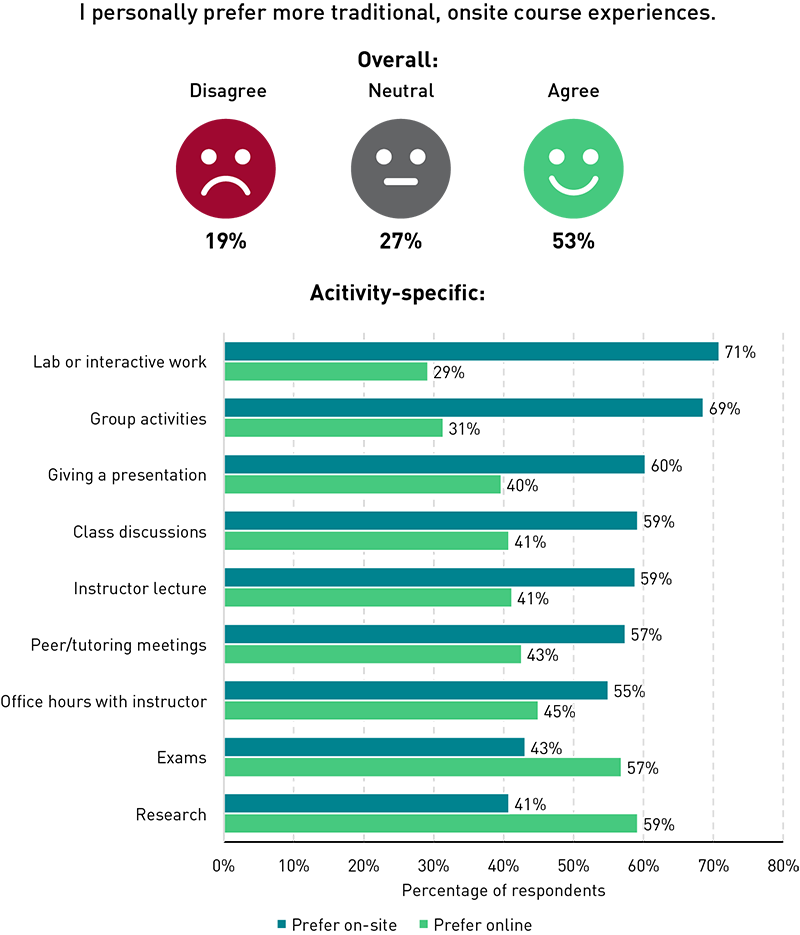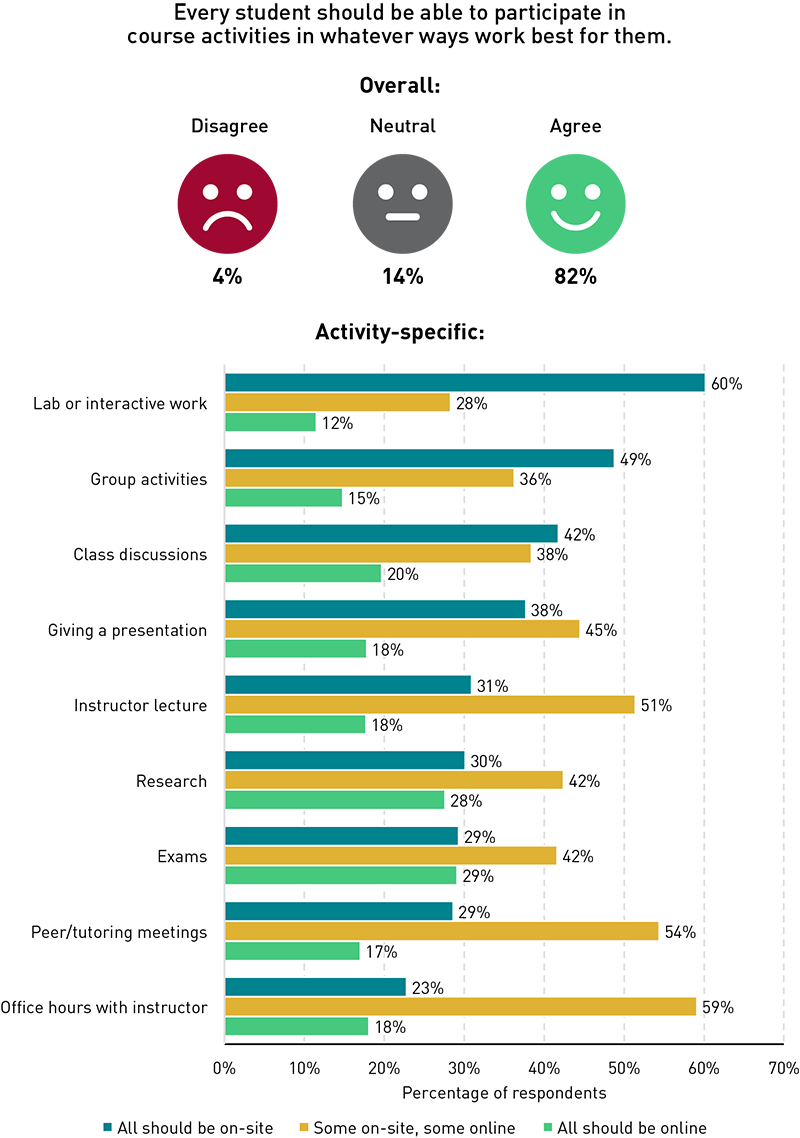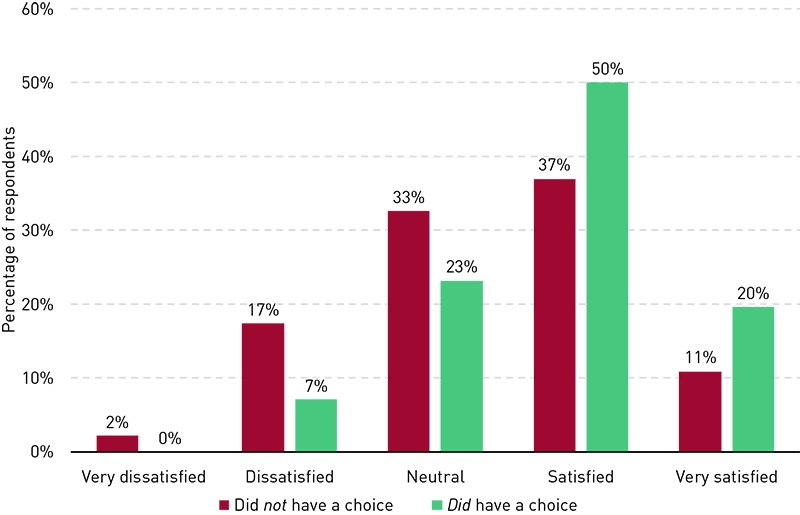Empowering Students to Choose
Higher education is becoming a learner's market. Vanishing are the days when students attended college because they "had to" and when the value and prestige of having a degree were taken for granted. Students, their families, and society at large are questioning the return on investment of the time and cost of the traditional college degree pathway, and technology is opening up new, more flexible and modular possibilities for what it looks like to engage in education.
Institutions will have less and less leverage in the student enrollment decision, and they will increasingly find themselves in the position of deferring and appealing to student choice in when and how and why institutions structure their degree programs and learning experiences.
Of course, the appeal to student choice will be about more than just maintaining enrollments, keeping the doors open, and catering to student consumer behavior. Much more importantly, there are layers of equity implications to contend with in deciding how and for whom to offer learning experiences, and a greater willingness to defer to student choice will go hand-in-hand with a greater responsiveness to particular student needs.
Learning Modalities as Ethical Practices, Not Personal Preferences
Overall, the majority of students expressed a personal preference for on-site modalities in general and for the specific course-related activities we asked about (see figure 3). A slight majority (53%) agreed that they prefer traditional, on-site course experiences, and these on-site preferences were particularly strong for activities such as labs or interactive work (71% on-site) and group activities (69% on-site). The only two activities not preferred as on-site activities by a majority of students were also the more typically "individual" activities not necessarily dependent on direct interactions: exams (43%) and research (41%).

These are merely expressions of students' own personal preferences, of course, and not expressions of what they believe to be the right or best ways for their instructors to offer course engagements for all students. When asked about their instructors' general approach to structuring courses for everyone, students instead expressed an ethic of flexibility and choice that would accommodate more than just their own personal preferences.
A full 82% of students agreed that "every student should be able to participate in course activities in whatever ways work best for them." Provided the same list of course-related activities as above and asked to indicate the best way for their instructor to organize all students' on-site and online participation, students leaned more toward a flexible middle option than they did toward a strictly on-site preference (see figure 4).

A majority or plurality of students indicated that both online and on-site participation should be offered to students for activities like instructor lecture, exams, student presentations, office hours, tutoring, and research. A majority or plurality of students still believed, however, that instructors should make activities like labs or interactive work, group activities, and class discussions on-site for all students.
So what? While they may have their strongly held personal preferences, students are generally magnanimous in their wider view of the higher education experience. This should be taken as a license for institutions to move beyond "majority opinion" thinking and to be similarly magnanimous in considering and giving equal credence to different, often competing, preferences and needs in students' learning experiences.
The Power of Choice for Student Experiences
In designing hybrid or HyFlex courses, some faculty might prefer to determine themselves which activities will be either on-site or online for all students, while other faculty will likely prefer to offer students the choice of modality for their own participation in those activities.1 Knowing that students have strong preferences for certain modalities based on factors such as lifestyles and life circumstances, we've already considered the implications of forced modality engagement for students' satisfaction with their hybrid courses.
We would expect, then, that having the choice of modality would improve students' satisfaction with their experiences, particularly among students more likely to express frustration with the hybrid course model (those students living on campus who prefer on-site modalities).
Asked whether the instructor for their hybrid course mostly left it up to them to choose their modality for engaging in hybrid course activities, 45% of students reported that their instructor did not give them a choice, and 55% reported that their instructor did give them a choice. Among those students who did not have a choice in their modality of engagement, 48% reported being satisfied with their hybrid course experience (see figure 5). Among students who did have a choice, 70% reported being satisfied with their hybrid course experience.

So what? The option of choosing modalities can go a long way toward improving hybrid course experiences for certain populations of students. But the power of choice goes beyond merely accommodating personal preferences. Student choice can also help ensure hybrid courses accommodate student accessibility and learning needs, resulting in course experiences that are more inclusive and equitable for all students. It is to these considerations that we now turn with our third and final theme.
Note
-
It is important to acknowledge, as well, that these course design decisions may be mandated by the institution, leaving faculty little choice in the matter.
↩︎